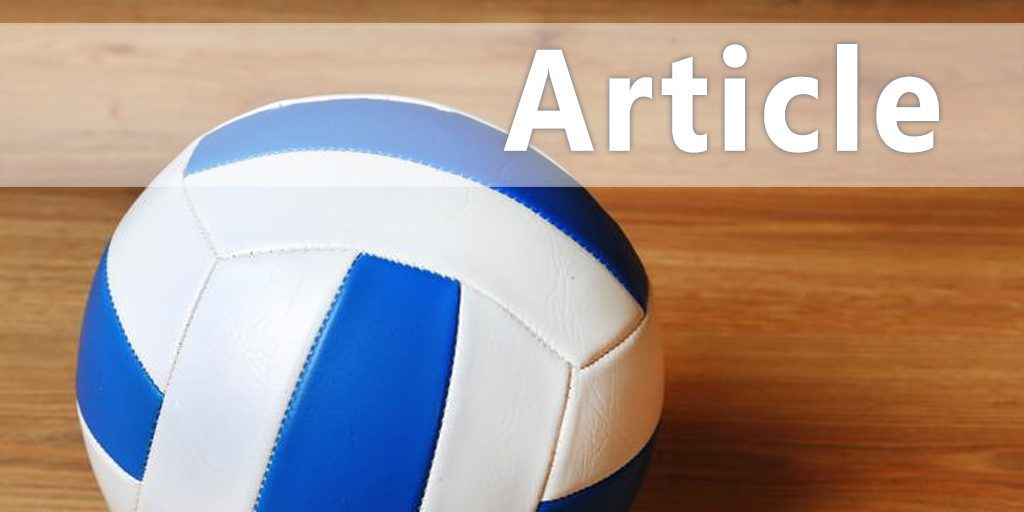|
How to Prevent In-Season Volleyball Injuries By: Jason Arnold Provided by: STACK
With respect to volleyball players, let's look at two major areas of the body-the knees and shoulders-and their most common in-season injuries: • Loss of ankle mobility leading to knee pain To better understand an injured area, we must better understand its function. Injuries relate closely to proper joint function, or, more appropriately, to joint dysfunction. Problems at one joint usually show up as pain in the joint above or below. (This is broken down in its entirety in The Joint By Joint Approach, by Grey Cook.) In the book Ultraprevention, authors Mark Hyman and Mark Liponis perfectly describe our current method of reaction to injury. Their analogy is simple: Our response to injury is like hearing a smoke detector go off and running to pull out the battery. The pain, like the sound, warns us of another problem. Icing a sore knee without examining the ankle or hip is like pulling the battery out of the smoke detector. The relief is short-lived. The Knees The knee is a stable joint, meaning it is designed to move forward and backward (sagittal plane) but not laterally or with rotational movement. Commonly, too much lateral force or rotation results in ligament tears. Yuck. Cook's "Joint By Joint" approach means we must consider the functionality (or more likely dysfunctionality) of the next joint above and below. These include the ankle (a mobile joint) and the hip (a ball-and-socket mobile joint). Ankle mobility and hip mobility play large roles in keeping the knee stable. Common knee pain comes from patellar tendonitis (Jumper Knee) and cruciate ligament injuries (ACL, MCL, PCL). Patellar tendonitis is inflammation of the tendon that connects the kneecap to the tibia (or shin bone). This is common in athletes subjected to repetitive, forceful jumping activities, such as spiking and blocking. Like ankle sprains, most cruciate ligament injuries among volleyball players occur when a player lands awkwardly after jumping. Notice the trend. The knee is not stable and becomes mobile in the wrong plane of motion. Pain or injury result. The Fixes Ankle mobility exercises and hip-mobility exercises are a great place to start when diagnosing knee pain. Get those joints functioning properly, and then tackle the knee. Second, muscular imbalance or tightness can be the cause of the knee pain and needs to be addressed. A simple Couch Stretch is a great way to improve the flexibility of the quadriceps and remove tightness from the patellar tendon. If you improve ankle and hip mobility with proper strength training and muscular development, you can usually reduce knee pain and improve performance. The exception to the rule seems to be the hip. The hip can be both immobile and unstable, resulting in knee pain from the instability. A weak hip will allow internal rotation and adduction of the femur-or back pain from immobility. The Shoulders The function of the shoulder is to be mobile. It is a ball-and-socket joint that needs freedom to move 360 degrees-sagitally (forward and backward), laterally (abduction and adduction) and transversely (rotation). The shoulder is the most complex joint, with many areas around it that need to be analyzed when diagnosing the source of pain. Commonly, doctors and physical therapists check rotator cuff first. Just as we did with the knees, we need to look at the surrounding areas and their functions to better understand the issues involved. The gleno-humeral joint is similar to the hip. The gleno-humeral joint is designed for mobility and needs to be trained for stability. The Fixes The need for stability in the gleno-humeral joint requires your strength program to include stability exercises, such as rhythmic stabilizations or the I,Y,T,W. It's also important to increase stability in the scapula region by strengthening the back with rowing exercises. The core plays a critical role in this, and must be a major focus in a volleyball player's training. Most common injuries to the shoulder come from imbalance or dysfunction. The cause of a sore shoulder after a weekend of playing volleyball can be simple overuse, but we can also attempt to eliminate excessive mobility of the shoulder by implementing shoulder stability exercises, as well as strengthening the surrounding musculature. Summary There is more to curing pain and improving function than checking out the affected joint. That is what we do best. Our program takes each client's needs into consideration and develops a plan for improvement. Too many athletes get injured because the old adage of "ice it" is still around. Let's be smarter and proactive. Let's take steps to improve the longevity of our athletes. We all know there is no off-season in volleyball.
|




